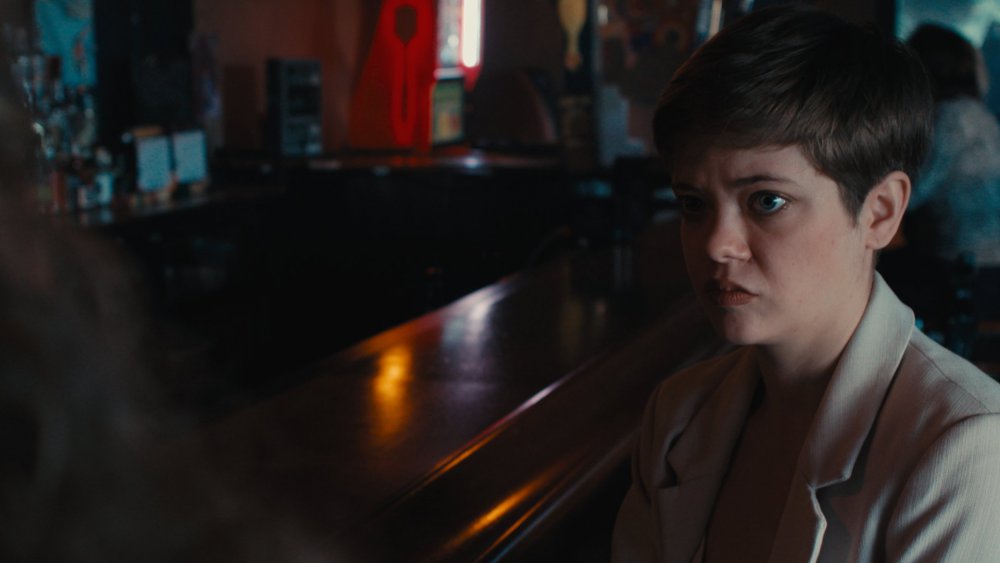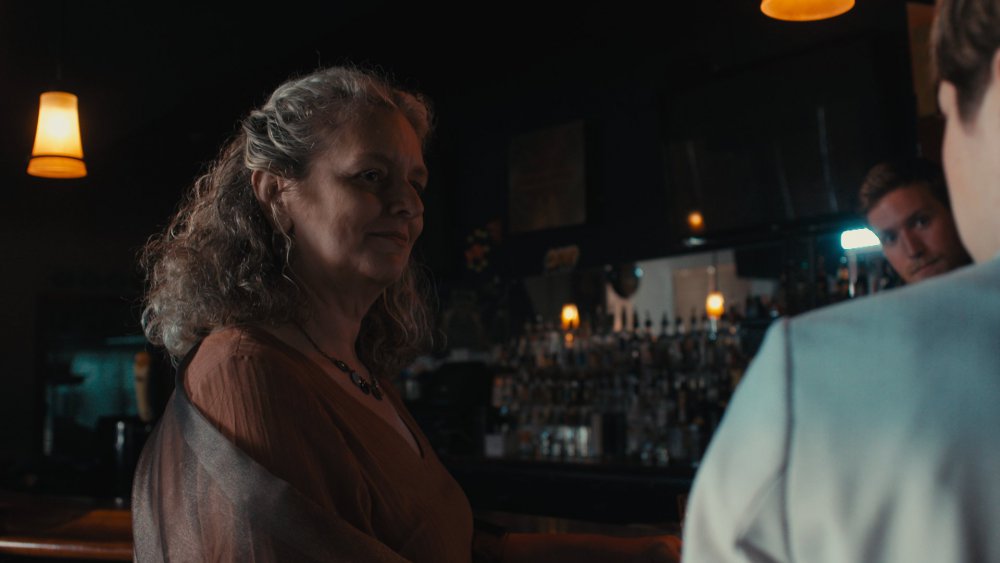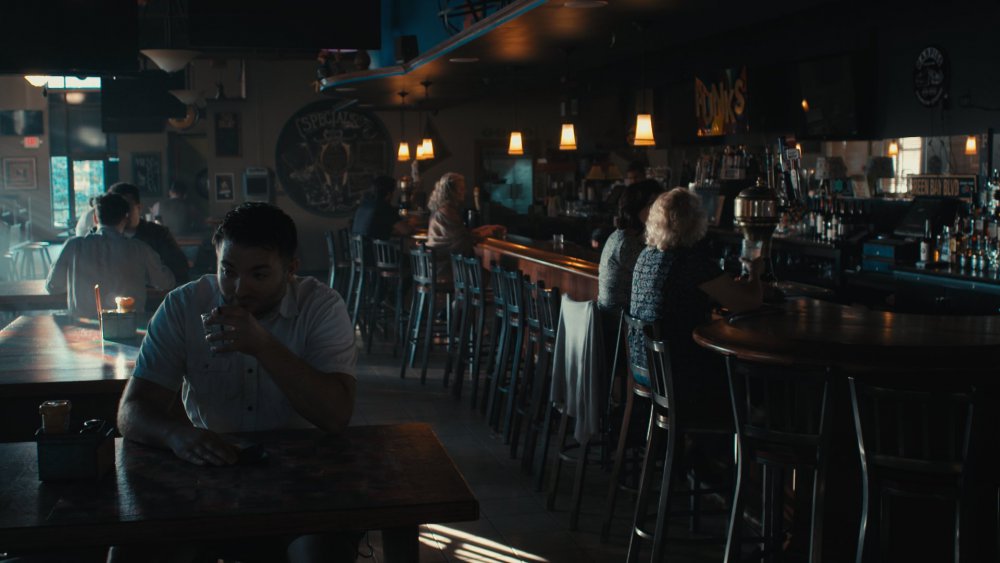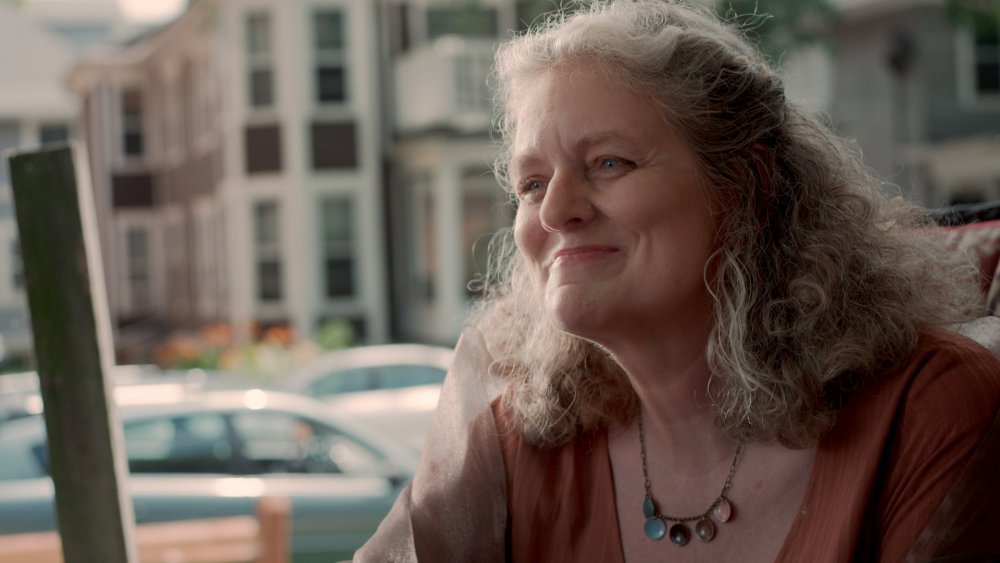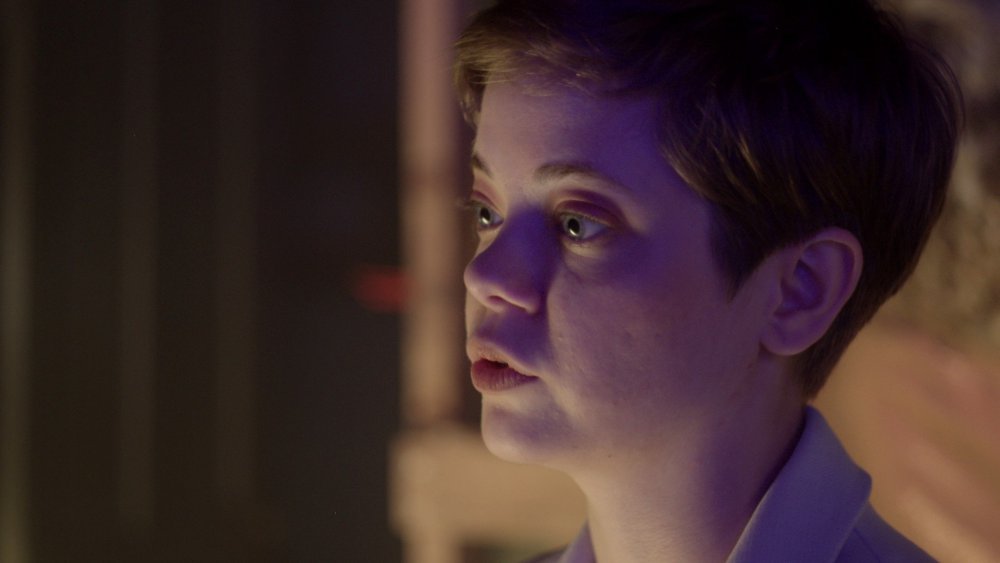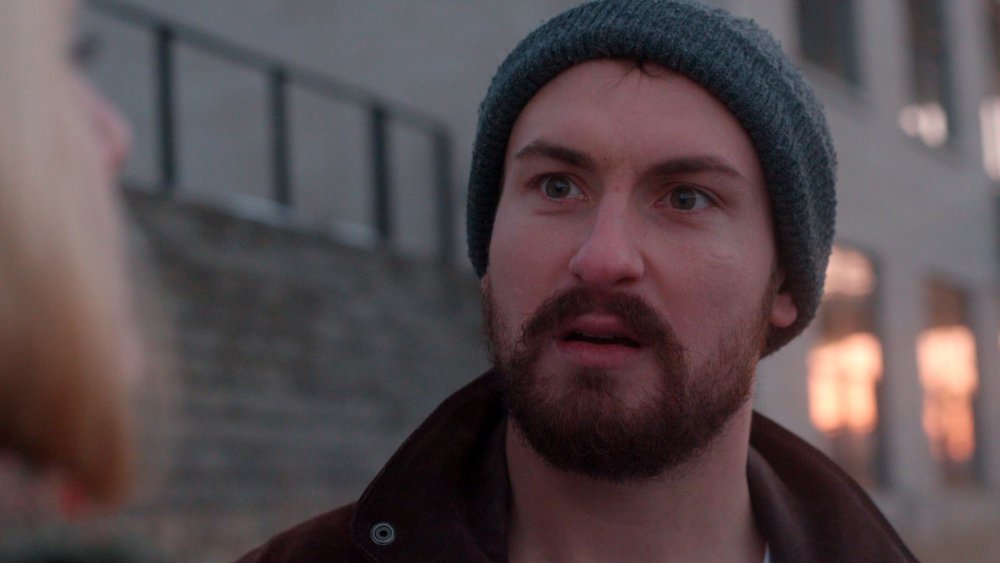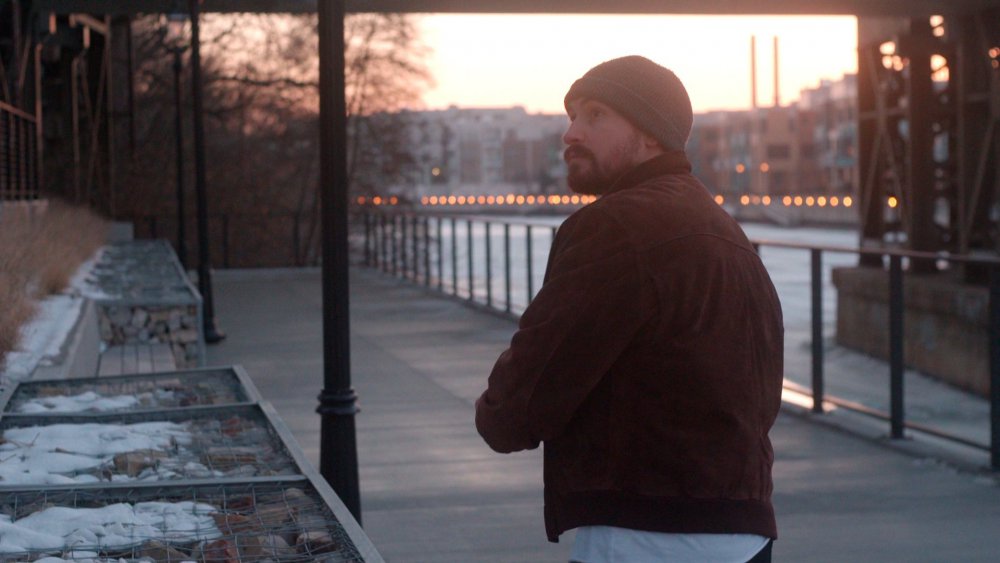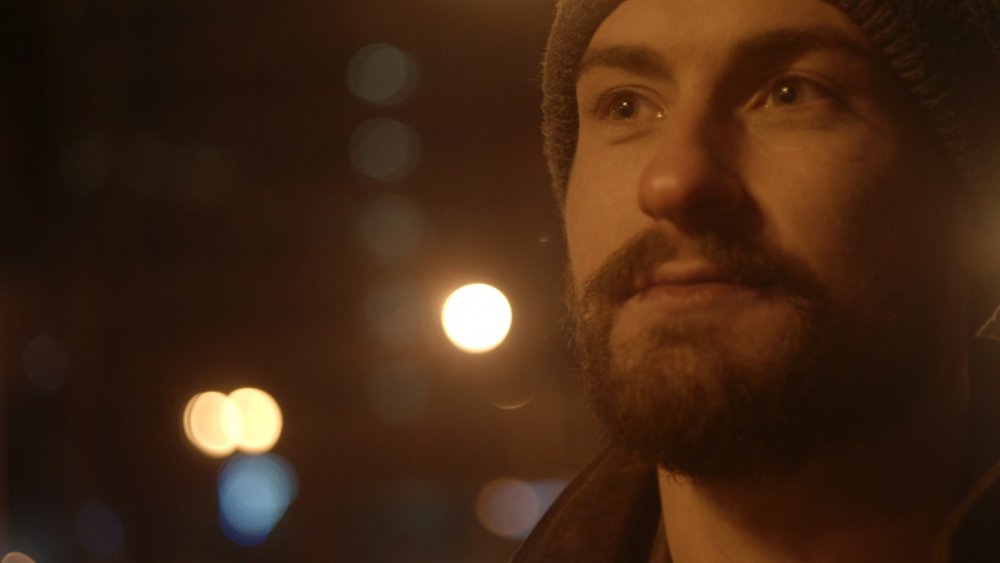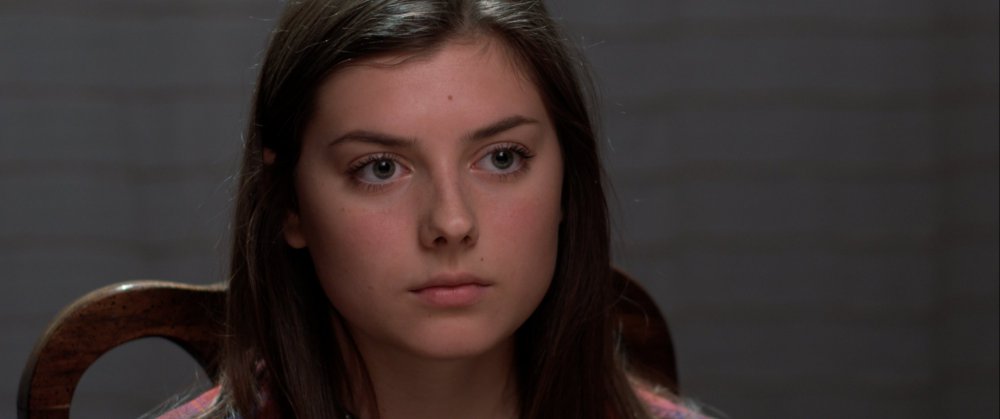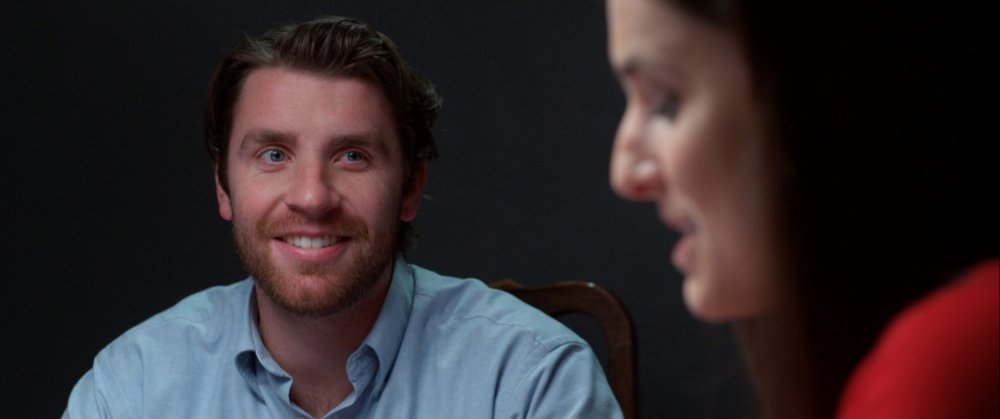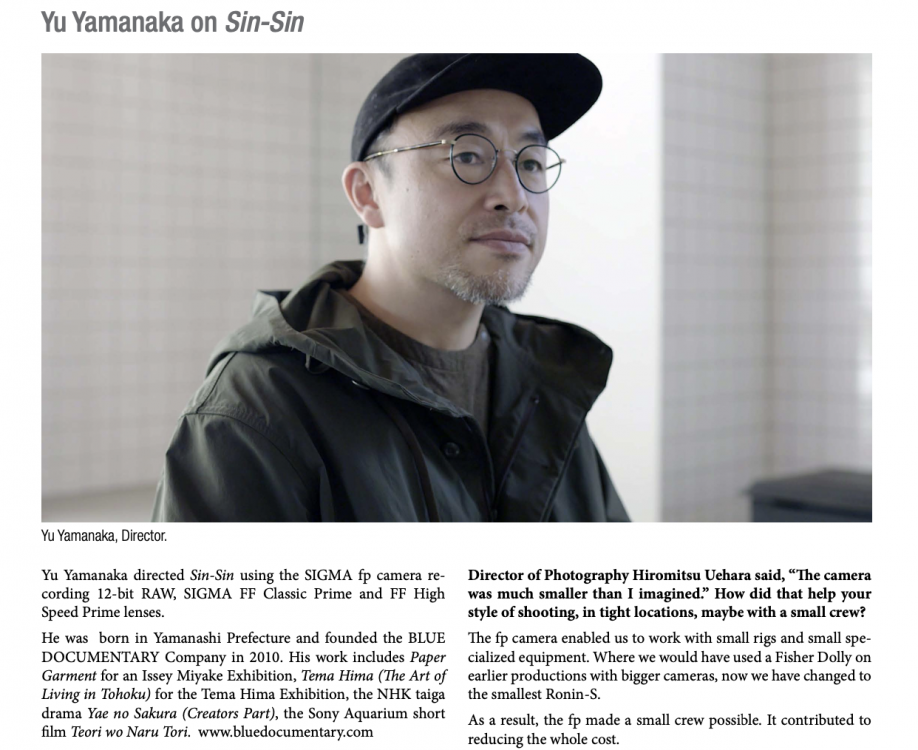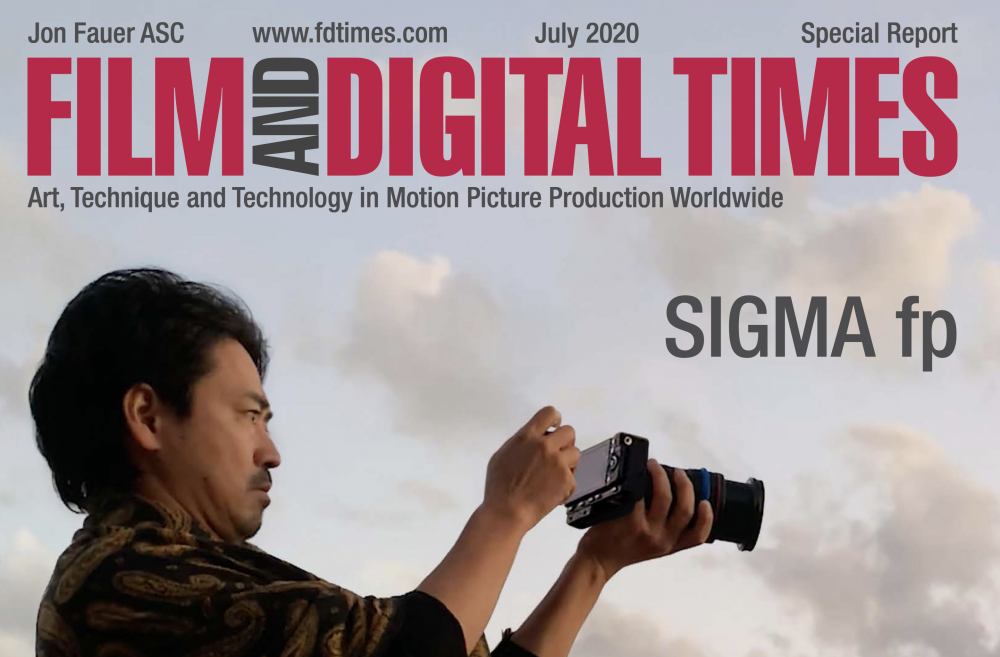Leaderboard
Popular Content
Showing content with the highest reputation on 07/01/2020 in all areas
-

Fuji H.265 vs Blackmagic Pocket 4K ProRes 422
austinchimp and 3 others reacted to Andrew Reid for a topic
Yes OK.4 points -
In fact. Both Upstream Color and Jaws stand. What's exactly the point? We should all know DOF doesn't exclusively depend on sensor size. Add faster glass (MFT format is actually much more affordable, a way lighter and a bunch of versatile options wait for you) and you'll stay in.4 points
-

Olympus sells Imaging Business
noone and 2 others reacted to Andrew Reid for a topic
Logged on and what do I see Yes another topic waylaid by Super8 causing arguments If you keep it up, I will have to do what's best for the forum as an informative tool for filmmakers. And you know what that means.3 points -
Well this topic went sideways... I thought it was about Olympus and their imminent demise? The problem which exists on a lot of forums etc always seems to come from 'hidden' members who all seem to share the same traits: Weird profile name. No avatar. No profile info. No links to any work, website, social media. Nothing. Folks like you, I don't take seriously. In fact I don't place any merit on anything you say because you could be a school child in your mothers basement, - there is no way of knowing. What is it this type of folks have to hide except perhaps everything? So go spit your dummies out by all means but you are only kidding yourselves if you think you have any credibility on-line. PS: MrSMW = my actual real world name abbreviated.3 points
-
This is getting ridiculous, any very minor difference is of course due to practical realities of manufacturing / testing / measurement. And has nothing to do with the inherent properties of the sensor itself. You're displaying once again your basic lack of knowledge of optical physics, and while I studied that throughout my science degree, you don't need any thing but basic high school level of physics to understand this. It's very simple. Go back and read it again: https://www.yedlin.net/NerdyFilmTechStuff/MatchLensBlur.html And if that doesn't help, go back to High School: https://www.khanacademy.org/science/physics/geometric-optics Then move on to this: https://optics.byu.edu/textbook https://www.amazon.com/dp/0521642221 I'm deep into early pre-production of a feature film right now, and while an ARRI ALEXA will be the main A Cam (and probably B Cam? Or an URSA Mini Pro) the Panasonic GH5 is also top of our list right now to consider as an additional camera (which due to the nature of this horror film a quite large portion of the final footage would end up coming from the GH5).3 points
-
Fuji H.265 vs Blackmagic Pocket 4K ProRes 422
heart0less and one other reacted to Video Hummus for a topic
In my experience any 10-bit 4:2:2 that is competently implemented with sufficient bitrate for the resolution is excellent. ProRes just has a benefit of being easy on the computer. I don’t see much difference from 150Mbps AVC and 400Mbps AVC All-I on Panasonic cameras. The All-I has subjectively better motion, but it’s so slight I only use it in the edge cases. I don’t see much difference between 400Mbps ALl-I and ProRes or ProRes HQ unless you are just pushing sliders all over the place, especially the white balance. Just get it right, or close to right, in camera like you should. Having said all of that, I would still like to see a mirrorless camera that records internally to ProRes flavors if only to speed up workflow.2 points -

Lens owning plans for 2020
noone and one other reacted to Tim Sewell for a topic
I'm currently building a set each (28, 35, 50ish, 85, 135) of M42 SMC-Takumars and early Minolta Rokkors, with the intention of keeping and building on the set I prefer and reselling the other. On experience so far I'll no doubt end up keeping both sets!2 points -
Somewhat related, here's some of what I have been able to do so far with my XT4. Made this video for my ex who adopted our dog together with me and hasn't seen him in months. Just run & gun while out on a literal run with my dog in the morning. Excuse the overuse of VFR slowmo, I just haven't been able to bring myself to endure the lack of stabilisation in regular FPS with this camera yet and I chose this day as my shoot to just stick to that one setting. It's all 1080 10-bit h.265 200mbps upscaled to 4k just so youtube wouldn't shit on my mp4 file (too much more). All of these clips were with a dumb EF adaptor and a Tamron 28-75 wide open using vari ND. I haven't been able to decide on what electronic comm EF adaptor to get yet to have no iris control for now. Nearly all the clips were just IBIS only and whatever focal length I had zoomed to, I was quickly going into the setting of mount adaptor and setting a fake focal length of about x0.7 to mitigate IBIS jumps on the old firmware. F-log, just freestyled the grading (No LUT) to something I thought was kinda nice. LOTS of clips were stabilised to a small degree in Resolve (translation mode).2 points
-
I've been obsessed with the IBIS problems since it came out. I did a quick test today on the new firmware. The long and short of it: - It no longer does that "One Giant Leap" thing when slowly panning/tilting etc Which seemed like it was caused by the sensor movement sort of being stabilised/smooth at the beginning of your movement but then hitting a wall and having to 'catch up' position to your panning. Now, the beginning of each pan or tilt almost immediately = quick responsive movement in the frame. I even found this a little jarring at first as if it had got more robotic, but I think I can just get used to it and initiate my movements gently. I was probably already conditioned to do my movements tailored to the old firmware IBIS or something. There's way less loose floaty feeling to the movement now, they just made it all feel ever so slightly tighter. - There's still a bunch of very Small Steps For Man. I think. Or, just still something I don't quite like about it. I think they've sort of broken down the stabilisation efforts into smaller chunks - there's STILL a small quantized, 'stepping' appearance when you look closely - it can be more obvious than normal in Slow-motion modes which almost (partially) defeats my purposes for slowmo, and I think it's there MORE of the time now, but to a less severe degree if you get my meaning, i.e. it never does the one Giant step in IBIS catch-up. But, man, it's still a bunch of v small steps. (maybe if you kneel and keep your arm strong you can mitigate the appearance in the result ( ͡° ͜ʖ ͡° ) I just feel like Fuji's whole approach to IBIS seems to have some fundamentally, inherently 'quantizey' stepping nature to it at the smallest level, compared to like Pana or Olympus. For anyone who hasn't got a sense of it yet, the really poor performance happens was happening when: A. tilting slowly while also moving on the up/down vertical (Z?) axis~ B. panning slowly while also strafing side to side on the horizontal (X?) axis C. probably other combinations of 2 types of movement I do feel like the update finally makes it possible for me to try to use, for video, an actual medium length Fuji lens that electronically communicates the focal length. Up to now to get smooth video I was always throwing a manual dumb adapted EF lens (wider the better) and setting a smaller 'fake' focal length on the mount adaptor setting, and this toned down the IBIS jumps. In 4k regular FPS modes I think it seems like I might even be able to give x1.1 DIS another shot now and see if it's usable. I was shunning the DIS completely til now. 4k60p with nice OIS+DIS would be great. My tests so far haven't been at all rigourous or scientific, I was too eager to bother setting up any direct A/B comparison shoot before throwing on the new firmware, so, y'know. I really hope in real world practice I start to feel like the IBIS is cool now and then this really will be my perfect camera. Other good news is I've had really good results anyway stabilising the XT4 footage in Resolve, needing really minimal extra crop factor and almost no artefacts when doing so. I think the strong rolling shutter performance of the camera might help avoid the warpy jelly shit when you have to stabilise. Compared to what I remember with my GH5 anyway. Or maybe my newer version of Resolve these days just does it better. Either way I feel okay about a little stabilising in Post with the XT4. If anyone comes across any compelling footage of testing out the new firmware, comparisons etc, let me know!2 points
-
Focal Reducers exist because want to use non-native glass with MFT cameras, which is part of the beauty of the MFT system! Its wonderful adaptability. You bring up not a negative about the MFT system, but a positive. That's like saying to you: "You don't own any Olympus gear, or even any MFT cameras, why are you in this thread?" I do own Olympus gear, and half a dozen MFT camera bodies! The Panasonic GH1 was the body which I started out my filmmaking career on which I did film school with. Of course why wouldn't I be interested in a thread about the future of MFT?? I like to think of it as a filmmakers forum. (although, perhaps you're closed to the truth!) If you need even more shallow DoF than the extreme used in Upstream Color, then yes, you're obsessed with super shallow DoF! And no wonder you hate upon MFT, just go buy yourself a Fujifilm GFX 100 instead. Indeed, and S16/16mm had been a standard for indie / doco / tv / premium news / music videos / etc for years. Clearly showing that "sensor size" is capable too. The MFT Mount embraces a range of sizes from S16 (BMPCC / BMMCC / E2G), to a little bigger (BMCC MFT), to 4/3", to very nearly S35/APS-C (P4K/GH2/E2/etc) to APS-C/S35 sized (JVC LS300). So? For film sets that's true for *ALL CAMERAS*. (unless you're a small minority who want to surrender to the machine and let Canon's DPAF do its guesswork, or something similar. And no, DPAF is not the same as having a professional 1st AC pulling focus) This is why you've got a 1st AC on all but the most micro of micro budget film sets. Last time I checked, 100% of A Cams of the Oscar winners didn't have IBIS. What's your point? That the P4K isn't right for you specifically? Of course, that's something only you can know and determine. But for countless other people the P4K is a fantastic camera! As I said in my comment which you replied to, that depends entirely on what is meant by "run and gun". This. x1000 Don't blame the entire camera ecosystem for the failings of a particular couple of cameramen/users. Bingo. (or even the GH1! Which was also ground breaking for its time, the first stills camera doing 1080 24p!)2 points
-
Olympus sells Imaging Business
SteveV4D and one other reacted to newfoundmass for a topic
What does his knowledge of audio have to do with this discussion? Does that make his opinion on cameras mean less or something? You realize his professional experience goes beyond sound, right? Most of us have experience in all forms of filmmaking. It's kind of a necessity when you do your own thing or work with a small crew. He's here for the same reason as you and me. Stop being condescending to people. It's unnecessary.2 points -
Whenever I read a long thread regarding the merits or shortcomings of the MFT format I'm reminded of a conversation I had with a DP quite a few years ago about Super 35 vs Academy ratio framing. For historical context every VFX heavy movie that was shot on film was typically shot Super 35 with spherical lenses even if its final projected format would be widescreen 2.39. Of the twenty or so films I've worked on that originated from scanned film, only one was shot with Anamorphic lenses even though the vast majority were slated for widescreen delivery. Anyway, the big concern back then was minimizing film grain and had less to do with the depth of field and blurry backgrounds, so you'd typically want to use as much of the negative as possible to reduce the film grain before scanning it. However, in talking with a DP one day, he told me that when a feature wasn't slated for a lot of VFX, they would often just frame the project in Academy Ratio with room on the negative for where the sound strip would go. In this way you would go Negative -> Interpositive -> Internegative -> Print without mixing in an optical pass to reduce the super 35 image into the Academy framing for the projector. The reason for this according to the DP was that the optical pass would introduce additional grain, so shooting S35 was kind of a wash in that you were trading the larger film area of S35 for framing directly for the Academy area on a projector and skipping the optical reduction that introduced more grain than just the steps in making a print. Of course now with cheap film scanning, Digital Intermediates, and of course digital cameras, everyone just shoots using the S35 area. My understanding from the conversation is that if you were shooting something like "Star Wars" that would have a bunch of opticals anyway, you'd shoot S35 even before the days of digital film scanning, but if you were shooting some standard film it was common for the DP to just frame inside the Academy ratio area of the film strip and skip the optical reduction. Is there anyone with more experience than myself with shooting old films that can confirm this? It really has me curious. The reason being is that the Academy Ratio on a projector is defined at 21mm across. While a multi aspect MFT sensor on something like the GH5s is 19.25mm across if you shoot DCI. When you consider projector slop or the overscan on an old TV for the action safe area, the difference in the exposed film or sensor area seen by an audience seems negligible-- and thus the perceived DOF or lack there of between the two formats. Anyway, just wanted to share this, since I have never seen it discussed anywhere. And maybe its just me, but I'm really curious as to whether the vast bulk of films shot from the 1930s and into the 90s were actually using the Academy Ratio area of the negative for framing. Also, hope I'm not derailing the conversation regarding Olympus too much, but as we're discussing the MFT format of Olympus cameras as a possible reason for it's lack of sales, this seemed apropos. https://en.wikipedia.org/wiki/Academy_ratio https://en.wikipedia.org/wiki/Super_352 points
-

Sony PMW-F3 with 2500 hours on it. Should I buy it?
PannySVHS and one other reacted to TheRenaissanceMan for a topic
2 points -

Fuji H.265 vs Blackmagic Pocket 4K ProRes 422
BenEricson reacted to Andrew Reid for a topic
I am about to start a big comparison between the Blackmagic Pocket 4K ProRes and H.265 on the Fuji cameras. Let's see who comes out on top. If it is the Fuji then maybe we can stop caring so much about our 7 year wait for ProRes on Japanese cameras. I have wished for so long that they'd do some form of Apple ProRes internally... surely a nice company like Apple would license if asked. Blackmagic Pocket Cinema Camera (original) cost what, $1k? So it can't be that expensive to license ProRes! And RAW is great but not practical for most.1 point -

FDTimes "sin-sin" director interview (Sigma Fp RAW)
Lars Steenhoff reacted to Andrew Reid for a topic
1 point -
This is starting to talk to me.......a........little.1 point
-
Sony PMW-F3 with 2500 hours on it. Should I buy it?
TheRenaissanceMan reacted to newfoundmass for a topic
I think he's being a bit tongue and cheek! I like Caleb. I wish he didn't do the click bait titles, but he pretty much exclusively reviews cameras that he has bought.1 point -

FDTimes "sin-sin" director interview (Sigma Fp RAW)
Simon Young reacted to Andrew Reid for a topic
My review of the film: https://www.eoshd.com/news/review-of-the-sigma-fp-4k-raw-film-sin-sin/1 point -
Fuji H.265 vs Blackmagic Pocket 4K ProRes 422
Andrew Reid reacted to KnightsFan for a topic
I think Intel supports 10 bit 4:2:2 decoding, but I have AMD so I'm not sure. @gt3rs was the one who started our attempts at smooth playback with 4:2:2 files, and I'm not sure if they found anything else about CPU decoding. Fwiw, I don't see any options in Resolve for CPU decoding on my Ryzen 3600, so if it has any they aren't implemented in Resolve. Edit: actually, I did try 1Dx3 4:2:2 files on an 8th gen Intel i7 processor. With QuickSync enabled, the files didn't even show up, and with QuickSync disabled they played at ~10fps. So either Intel doesn't support 4:2:2 on that processor, or Resolve doesn't implement it.1 point -
Noooooooooooooo..... I don't want him talking about it, that will push the price up on them!! :-o Want to pick up a 2nd F3 myself one day 😉1 point
-

Fuji GFX 100 ProRes RAW?
tweak reacted to Andrew Reid for a topic
Z-CAM with ProRes RAW is in many way more useful on that camera, because you need to add the screen anyway, and it doesn't have a standard or widely supported internal RAW codec, so you may as well use the Ninja with it if you want to shoot RAW. The 5.8K will be on the more expensive larger sensor models and I think 4K on the M43 Z-CAM E2. I'll do a blog post about it in due course. Would help if they could keep me informed so I can prepare one. I'm not a psychic1 point -
1 point
-
Wow, over reaction or what... 😄 My point was on Facebook, you don't often see a resume. And if they don't post links either, not even their work. There are people on Facebook who do share their work. I don't doubt their credentials or experience. Its there to see. So yes, I do trust a guy on Facebook with a resume and links, if they're available. I've seen plenty of work I admire, and that I have learned from. I've been a part of several forums and some users I have respected and admired despite never meeting face to face. And on the subject of face to face. I'm reminded of an incident years ago, when interviewing a friend of a friend for the position as 2nd cameraman to some work I was doing. I befriended him on Facebook and arranged to meet him. It was a good interview, he spoke at length of his experience, which was very impressive. He seemed a little cocky in his talk, but I had no reason to doubt his word. However, as I was nervous, employing someone for the first time, I did contact a nearby company he worked for, whose work I was aware of. She told a very different story to this guy. Of how he walked out of a job after getting into an argument with a Wedding guest. Plus a few other things that worried me. So that was face to face, him being a friend of a friend and having him as a Facebook friend. Trust is a complicated process, especially with social media. Forums are wonderful tools for learning and sharing, but that doesn't mean I take at word every Tom, Dick or Harry saying this, that and everything.1 point
-
I don't tend to make a habit of making anything personal, but in your case, I'll make an exception and just this once (ie, will not comment further) and that is... I didn't name or mention you, but your direct response to me made it about you and you exclusively, you very special and more than a bit paranoid internet entity. When anyone posts or says anything anywhere and purports it as fact, unless the source is a known, bona-fide, regular trusted source, folks (naturally) question it and ask for references. People who post shit with zero references other than, "you're gonna have to trust me on this, I'm an authority", just come across as opinionated brainless idiots. I'm not suggesting you are one. I don't know you or anything about you but based on a lot of your posts and general defensiveness, have no credibility with me, not that you'd care about that. The bottom line for me though is this kind of shit is what stops many from posting or simply just going elsewhere, ie, it's not participating as part of a community, but pontificating from your perceived lofty cloud. But whatever, do what you like, it's not my forum anyway and whatever comeback you now make...because you won't be able to help yourself, won't elicit a response from me. Ciao.1 point
-
Olympus sells Imaging Business
IronFilm reacted to newfoundmass for a topic
Yeah, Facebook proves people are willing to be as awful under their real names as they are under aliases. Though I do think when someone is being condescending to others and acting as though their experience is more significant/important than others, they should be compelled to show who they are and what they've done, otherwise they're just denigrating others work and experience while hiding behind anonymity. It's not too difficult to see @IronFilm's work/experience, as I subscribe to his YouTube and see him active on Facebook groups, so seeing someone diminish his knowledge and experience by just calling him "an audio guy" really kinda ticks me off.1 point -

Olympus sells Imaging Business
newfoundmass reacted to Andrew Reid for a topic
I have been considering real names for this forum for a while but it doesn't seem to help the comment standard on the EOSHD Facebook group1 point -
They don't make movie trailers like these anymore. 🤣🤣🤣 It depends how much detail they've included in their profile. Some have. Others haven't.1 point
-
1 point
-

Fuji H.265 vs Blackmagic Pocket 4K ProRes 422
austinchimp reacted to heart0less for a topic
Many people here praise the footage coming out from Panasonic S1, especially the 10 bit h265 422 LongGOP @150mbps Is there any chance you could include it in the comparison, as well, @Andrew Reid?1 point -
Camera gear is now disposable?
Stab reacted to TheBoogieKnight for a topic
Hi Stab I think the optics must have become misaligned somehow but I've got no idea how. I ended up getting a halo around high-contrast areas. I don't know if it happened suddenly or was a gradual thing. As I said I noticed during lockdown after taking a few pics. I didn't need to pixel peep, it was pretty easy to see. I did initially think it might be the AF but I did some tests and it definitely wasn't; something had happened inside the lens. This is probably just a one-off but as I said I've read a few people having problems with the AF/MF clutch and aperture ring on these lenses and (as far as I know), they had to get replacements as even those parts weren't serviceable.1 point -

truth about Pocket 6k dynamic range
Emanuel reacted to Andrew Reid for a topic
The big mystery of the day. Is @androidlad actually Graeme Nattress? 😃1 point -
The Panasonic can upload your videos without a PC: "The LUMIX G100 integrates both Bluetooth and Wi-Fi 2.4GHz (IEEE802.11b/g/n) connectivity for instant sharing. A dedicated upload button makes it quick and easy to transfer videos and photos to your smartphone ready for sharing on your favorite social networks" https://news.panasonic.co.uk/panasonic-announces-new-lumix-g100-camera-for-vlogging-and-creative-video/1 point
-
Sony A7S III
zerocool22 reacted to Super8 for a topic
We will see. I will go with Sony or Canon depending on which camera is better. Maybe neither one if they are just spec cameras. The proof will be in image quality. Sony will have to jump in the 10bit world and 4K 60p crop is what we might get. I think release dates will be 2 years apart with lots of firmware updates to keep people from jumping to a new brand.1 point -

Sigma FP - 4k RAW Dynamic Range
Inazuma reacted to ImagineArt for a topic
So far I am enjoying RAW 4K on the FP minus the fact I still can't see what I shot in camera. What are your experiences with Sigma's RAW performance and what are your thoughts on the dynamic range recovered in RAW? Below is a little stress test I shot in Boston a few months ago. https://www.youtube.com/watch?v=dzpJutOB9XE&t=31s1 point -
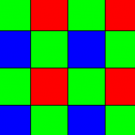
Fuji H.265 vs Blackmagic Pocket 4K ProRes 422
austinchimp reacted to rawshooter for a topic
ProRes is factually a derivative of MPEG-2, that's why it's so light on CPUs. It compensates its old codec technology through high bitrates, thus the generally good quality. h264 and h265 will always be better than ProRes at the same bitrates, provided that a decent codec implementation (with high profile and 10bit color depth) is being used. So the question is whether 400 Mbit/s h265 (in the case of the Fuji XT-4) for 4K/25p video is visually as good as ProRes HQ at 737 Mbit/s for the same resolution and frame rate... EDIT: The real issue with h264 and h265 are not the codecs themselves, but that manufacturers - treating them as consumer codecs - bake all kinds of overdone image processing (aggressive denoising, artificial sharpening, pushed contrasts) into material recorded with them. ProRes, being conversely treated as a "pro" codec, doesn't get those over-processed images. This is why we think that ProRes is better...1 point -

Sony PMW-F3 with 2500 hours on it. Should I buy it?
TheRenaissanceMan reacted to Geoff CB for a topic
For anyone looking for the best monitor for this and to get 4:4:4. Pix-E5 with XLR audio adapter. https://www.ebay.com/itm/Video-Devices-PIX-E5-Recorder-Monitor-with-PIX-LR-2-SpeedDrives/333635380743?hash=item4dae37e607:g:CGwAAOSweLte9LOC1 point -
Biggest difference is that 10-bit H265 hammers PC's even with hardware decode. Prores just plays like butter. I run a RTX 2080 and it struggles on heavy grades in resolve with Fuji footage.1 point
-

Sony A7S III
heart0less reacted to MrSMW for a topic
I'm interested...but then I am interested in anything new from whoever. Nothing to do with GAS (I don't suffer) but am interested to see how anything stacks up to my current hybrid of choice, the XT3. I was expecting to have gone XT4 this Spring, but Covid-2020 killed that. Any remaining wedding season this year means any/all new stuff won't be available anyway, so any jobs this year will all be XT3. And then 2021 comes down to that combo of; need vs cost. What do I personally need? 8k? Nope. Raw? Nope. 4k 60p, 10 bit internal? Yes. IBIS? Ideally. (My current compromise). Canon R5 will undoubtedly be overkill for me. R6 could be a contender... This new Sony? Probably like the R5 more than my needs so XT4 or my 'ideal' (based on my spec) XH2 most likely. But good to see anything new that moves the game forward. Unlike the *cough* G100 Shitbox.1 point -

Sony PMW-F3 with 2500 hours on it. Should I buy it?
TheRenaissanceMan reacted to IronFilm for a topic
A battery change shouldn't necessarily requiring re-balancing it every time. Plus they (the Sony and the Fuji) can be USB powered. You could buy the original Pocket for cheap on eBay1 point -
@Super8 Is there anything you can show us where specifically the GH5 have plastic skin tones or where you can't get the same look? I keep asking because there are people who I have spoken to at length and whom I respect that believe that there is a difference, but I can never get enough information about what they're looking at in order to be able to see it myself. It's easy to point to a video shot in glorious light with a cast and crew that are on their game and say that a different setup can't do that, because the only evidence against that statement would be a video exactly the same but shot on a different camera, and at sunset and with the light and breeze just-so it's not possible to replicate. My questions is about what specifically can't be matched. I am literally interested in someone pointing at part of a still frame of a video and saying 'see this thing here.. FF doesn't do that' or 'see that there.. MFT doesn't do that', or 'see how this thing moves here... and now see on the other one how it's different... if you can't see it then watch for the way that X does Y' One resource that I found very interesting was this: https://www.yedlin.net/NerdyFilmTechStuff/MatchLensBlur.html The basic idea that you can match blur on different crop factors isn't the headline here, it's that Steve Yedlin is saying it (he'd know!) and is probably the most thorough analysis I've yet found. He doesn't talk about availability of lenses, but he definitely discredits the people that straight-out suggest that you can't get shallow DoF on a smaller sensor. He also doesn't talk about if there's a 'look' inherent in various sensor sizes, but he rules a whole bunch of variables out. I'll be the first person to admit that wider lenses with wider apertures that are sharp wide-open aren't available for MFT, and maybe that's the 'look' that you're referring to, but that would only apply to shots where there needs to be a larger aperture - MFT can easily match a FF 50mm at F4 for example, so in that particular shot it can't be the lack of lenses contributing to it. I'mm also be the first to admit I haven't got any glorious images to post that will "prove" the GH5 does hold up, but even if you gave me an Alexa I think I still couldn't do that - the weak link in both setups would be my skills in post! I'm also half-suspecting that it's actually not the camera at all, but everything else. What I mean is that film-making is a very deep and very difficult thing to do and get spectacular results, and by the time that you're good enough to do all the other stuff right you are spending so much money anyway that of course you just rent an Alexa for the shoot. So in a way I question if it's not that it's not possible to do on smaller sensor cameras, maybe just that it isn't done on smaller cameras. You're saying you can see the look, I want to also be able to see it.1 point
-
1 point
-

Gerald Undone on camera fans and his Z-CAM review
buggz reacted to Andrew Reid for a topic
Solution: Abolish Facebook.1 point -
"Crop factor" usage of cameras with obvious issue from DP's perspective... that found their way to different Cannes 2019 selection sections: MAIN COMPETITION (Palme d’Or Contenders) - “Sorry We Missed You” Dir: Ken Loach, DoP: Robbie Ryan Format: Arri 16mm Camera: Arri416 16mm DIRECTORS’ FORTNIGHT - “The Halt” Dir: Lav Diaz, DoP: Daniel Uy Format: 4k Camera: GH5S Panasonic Camera Lens: 18mm-50mm zoom lens Panasonic, 70mm-100mm zoom lens Panasonic - “Lillian” Dir/DoP: Andreas Horwath Format: Digital, 2K, Lossless CinemaDNG RAW — and 4K for the drone footage Camera: Blackmagic Pocket Cinema Camera Lens: Voigtländer Nokton Series - “The Orphanage” Dir: Shahrbanoo Sadat, DoP: Virginie Surdej Format: Alexa Mini-S16 HD mode/ prores Camera: Alexa mini S16 HD mode UN CERTAIN REGARD - “A Brother’s Love” Dir: Monia Chokri, DoP: Josée Deshayes Format: Super 16mm, 7219 Kodak Camera: Arri 416 - “Liberte” Dir: Albert Serra, DoP: Artur Tort Format: 2K Camera: Canon C300 Mark ii (crop mode) Lens: Canon 11-138 (S16) OUT OF COMPETITION - “Let It Be Law” Dir/DoP: Juan Solanas Format: UHD 3840×2160 Camera: Panasonic GH5 Lens: Leica 12-60mm 2.8/41 point
-

SIGMA FP with ProRes RAW and BRAW !
markr041 reacted to Lars Steenhoff for a topic
Thanks for explaining the steps to achieve a proper lut, I may look into making one at some point Right now I'm not too worried about achieving the final look at shooting time myself, I just want to know if I'm exposing properly. The rest I can deal with in Resolve1 point -

SIGMA FP with ProRes RAW and BRAW !
markr041 reacted to Lars Steenhoff for a topic
Use "color mode off"for monitoring exposure in raw. It gives the most accurate image for zebra's And if you use an external monitor you can load the LUT for the final intended look.1 point -

Fuji GFX 100 ProRes RAW?
@martybleazard reacted to Andrew Reid for a topic
What's to stop BRAW being used by Panasonic internally?1 point -
Fuji GFX 100 ProRes RAW?
JR Lipartito reacted to Sharathc47 for a topic
Yeah, regarding Prores Raw licencing, I read somewhere about implementation of PRORES RAW internally in MAVO edge 8K camera, whether there were any issues regarding patents. Kinefinity replied that "Patents are restricted to US but not in other countries and we don't sell any products in US."1 point



